Nowadays, with the prevalence of ridesharing, electric bikes and scooters, it’s not difficult to find cheap ways to get around. But, for something different, we recommend you go back to the good old days – and discover San Francisco by historic streetcar.
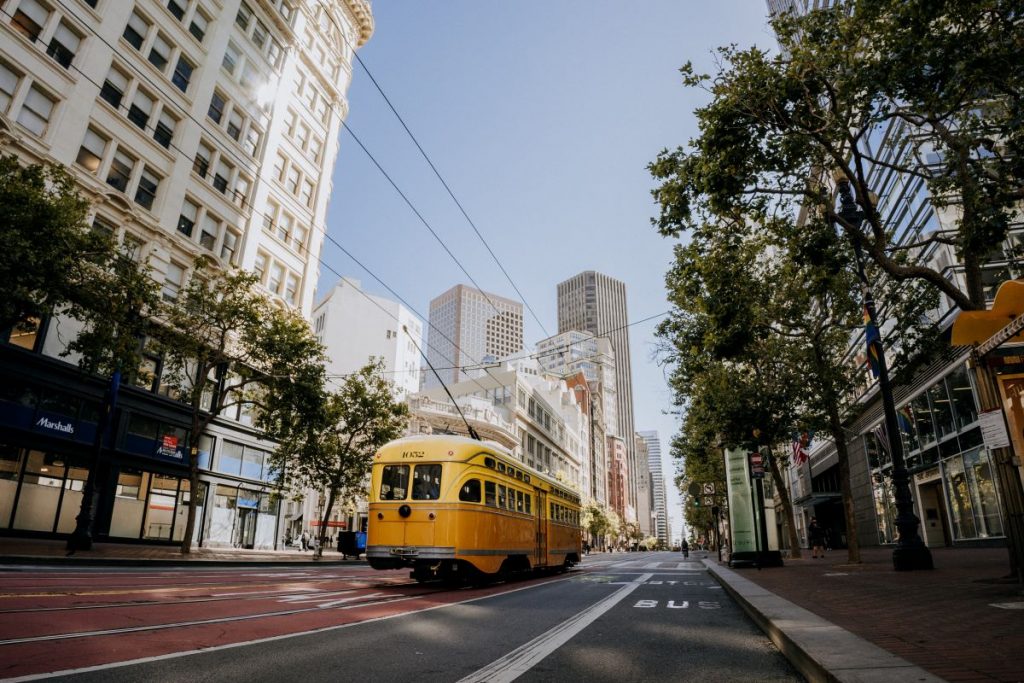
Why choose to ride the streetcars?
Go back in time
The iconic San Francisco Municipal Railway (Muni) fleet of streetcars started operation in the early to mid-1900s. This historical form of public transport has been running in San Francisco ever since.
Travel in style
You cannot deny that the transit’s colorful flair adds to the city’s vibrancy. Your streetcar might be bright yellow, two-toned red and orange, or even open air. The cool vintage look of these vehicles lends a nostalgic excitement to discovering San Francisco by historic streetcar. And the ride is guaranteed to be fun, whichever streetcar you’re in.
See the sights
Riding the F-Market or Wharves streetcar routes, through the city’s heart and along its stunning waterfront, is a destination in itself. The streetcars travel some of the most exciting parts of the city, and you can choose a few places to get off and explore
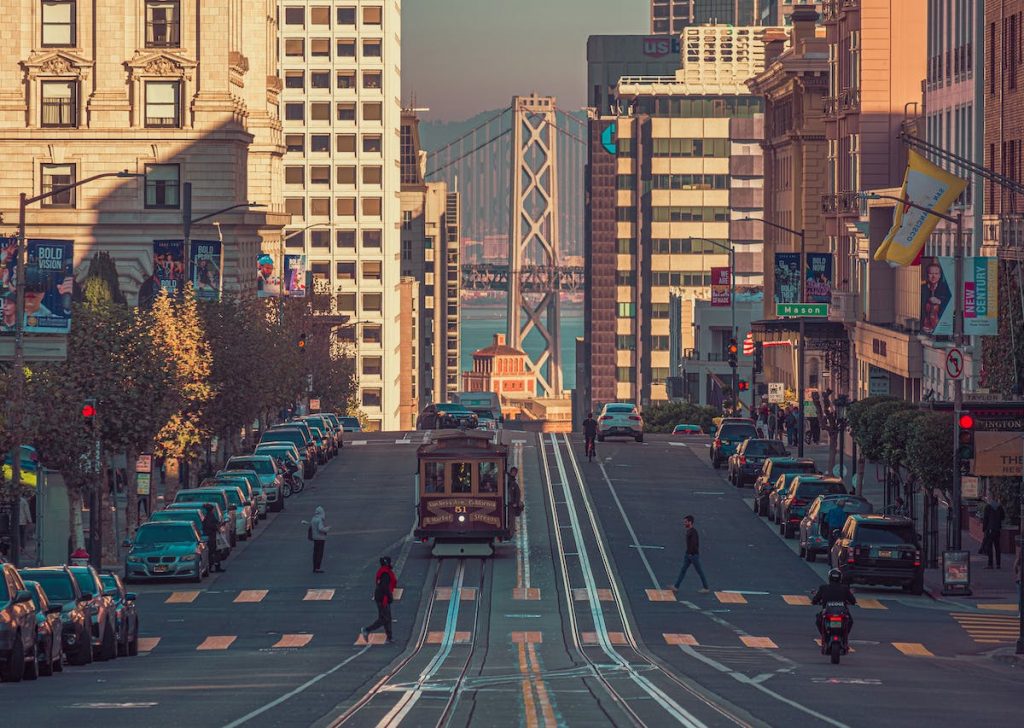
Insider’s tip: San Francisco is a vast city with many charming and historic neighborhoods. If you’re looking to visit the City by the Bay, check out our guide on Where to Stay in San Francisco, including tips on the city’s top neighborhoods.
The Castro/Mission District
San Francisco’s F-Market streetcar line begins in the middle of the city. You will find it at the intersection of 17th Street, Market Street, and Castro Street.
The Castro District is a major west coast hub for the LGBTQ community. Street festivals happen throughout the year. You can enjoy socializing and dancing in its bars. Or if you prefer just to watch the neighborhood in action, you can relax at a sidewalk café while enjoying the afternoon sun.
If you’re up for some walking, you can get to nearby points of interest from The Castro. The Randall Museum, an arts and science museum for children, is located north of the streetcar route in a hilltop park. Alternatively, head east of The Castro to discover the hip Latino-infused vibes of the Mission District. Here you can try local Mexican cuisine like the famous enormous Mission-style burrito.
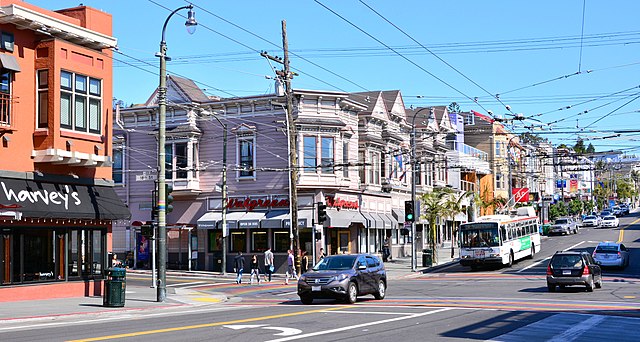
The Castro has historically been a hub of LGBQT culture and activity. Photo Credit: Mike McBey
Civic Center/Mid-Market
If you have tickets for the opera or symphony, the Civic Center or Mid-Market neighborhoods are your most likely destination.
The 1915-built San Francisco City Hall, with its famous dome, is a few blocks north of Market Street between Polk and Larkin Streets. It is lit up at night, casting a magical backdrop for performances at nearby Herbst Theater, War Memorial Opera House, and Louise M. Davies Symphony Hall.
The Asian Art Museum in the Civic Center District displays modern to ancient masterpieces from Asian cultures worldwide. If you’re in the mood for song, dance, and acting, catch a traveling Broadway show at the Orpheum Theatre or Golden Gate Theatre.

The Asian Art Museum has pieces in its collection as old as 6,000 years. Photo Credit: Joy of Museums
Union Square/SOMA
High-rise city buildings soar overhead as the streetcar rolls into downtown San Francisco’s Union Square and South of Market (SOMA) districts. Experience high-end shopping at exclusive retailers like Saks Fifth Avenue, Tiffany & Co, and Louis Vuitton surrounding Union Square. Or, Westfield San Francisco Centre, an indoor mall with over seventy stores, is an excellent place for shopping til you drop.
Go south of Market Street to visit the SOMA district’s stunning visual art and cultural museums. The Contemporary Jewish Museum and Museum of the African Diaspora educate and enhance understanding through immersive storytelling exhibits. Stroll through the San Francisco Museum of Modern Art (SFMOMA) for a contemporary interpretation of art, then unwind across the street in the welcoming Yerba Buena Gardens.
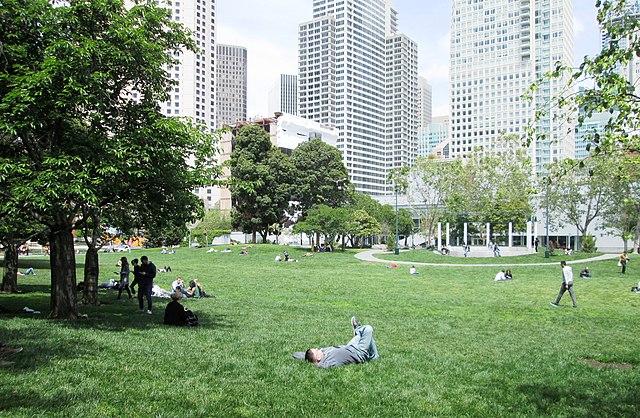
Yerba Buena was the name of the original settlement that became San Francisco. Photo Credit: Beyond My Ken
The Embarcadero
On the ride up Market Street, San Francisco’s historic Ferry Building materializes between downtown buildings. Before the streetcar turns onto The Embarcadero, it passes the San Francisco Railway Museum, where the history of vintage streetcars and city transportation comes alive.
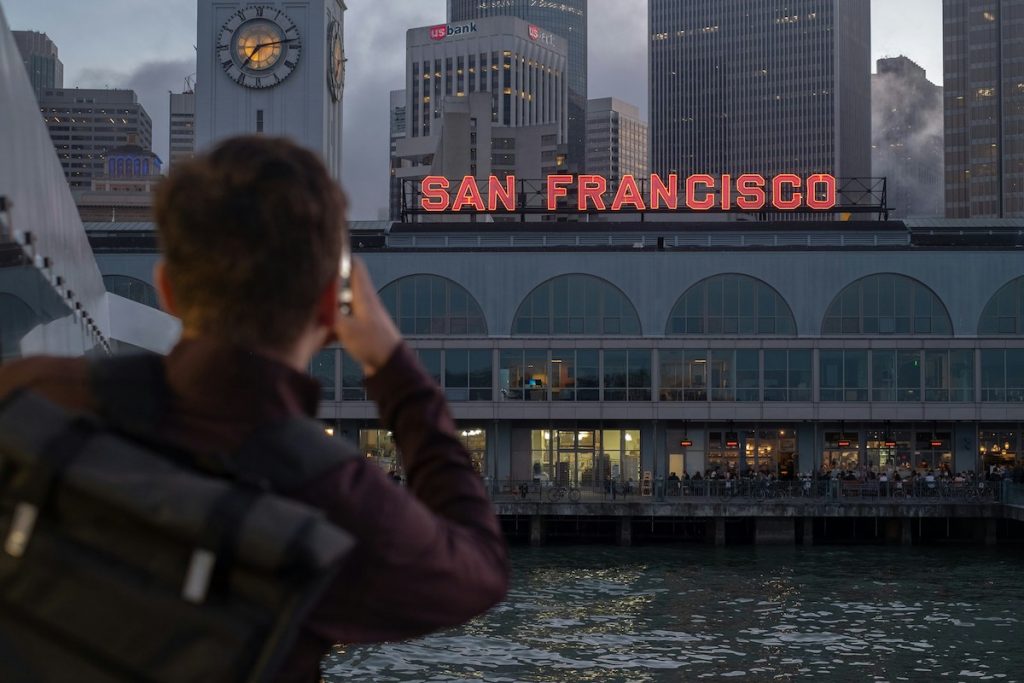
Spectacular scenes of sailboats racing past Treasure Island and under the Bay Bridge happen along the waterfront route. Stop at Pier 15 to discover science the fun way at the Exploratorium, where hands-on experiments spark wonder. Coit Tower, a white concrete column built in the 1930s, overlooks San Francisco’s northeast waterfront. You can walk and hike up to the tower from the streetcar route or just marvel at it from your seat.
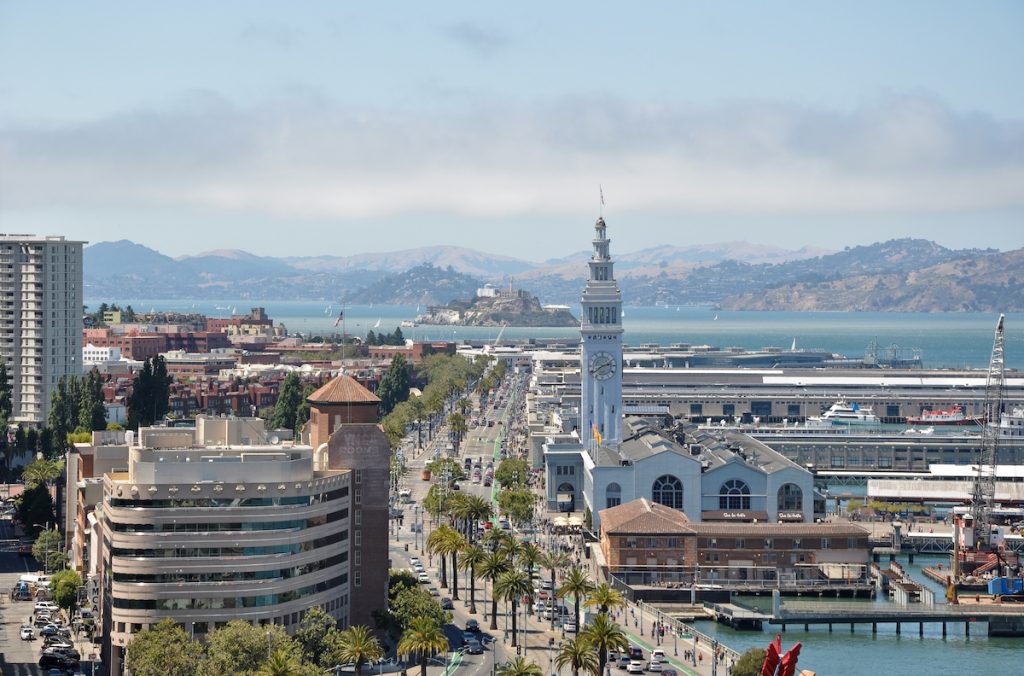
Fisherman’s Wharf/Pier 39
Fisherman’s Wharf and Pier 39 are at the end of the streetcar line, or the beginning, depending on how you look at it. From here, you can explore the Bay via a San Francisco bay cruise aboard ferry boats and catamarans. Walking the docks, dig into a clam chowder sourdough bread bowl and sample fresh Dungeness crab at sidewalk stands. Not to mention the local population of sea lions that have chosen this pier as their home.
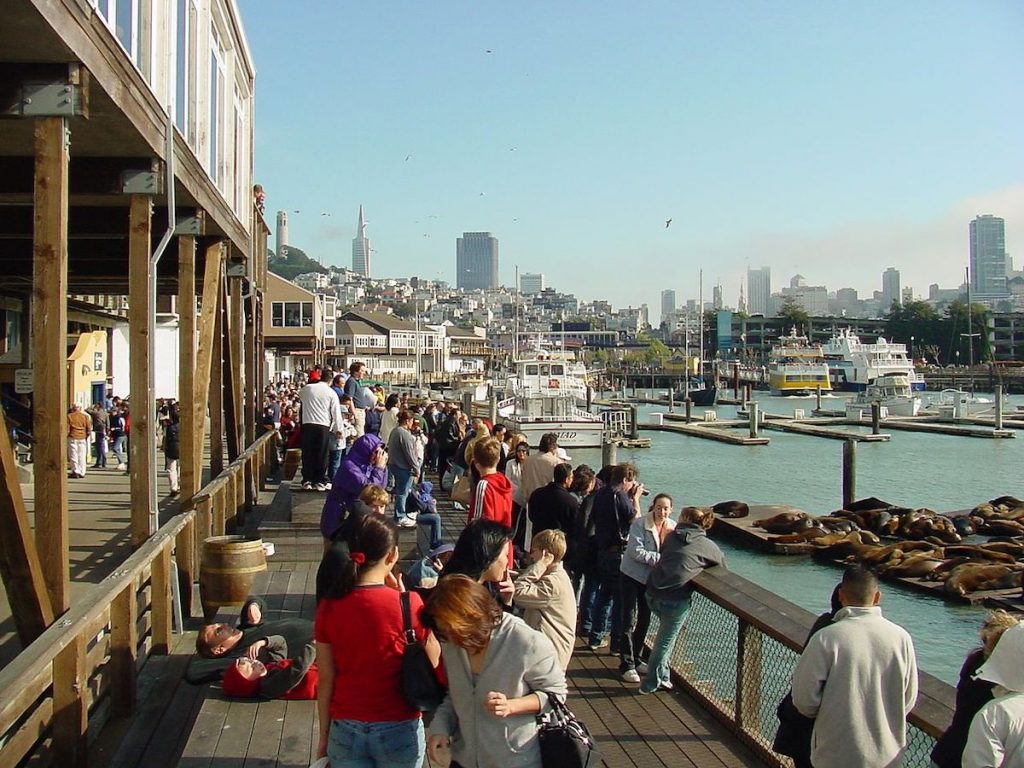
Stretch your legs with a walk to Hyde Street Pier, a maritime museum where photo-ready historic boats are docked and open for visiting. Find the Ghirardelli Chocolate Experience across the way, and try a decadent hot fudge sundae in the factory buildings where the famous chocolate was perfected. Then stroll along touristy Jefferson Street, the perfect place to pick up a San Francisco souvenir or two.
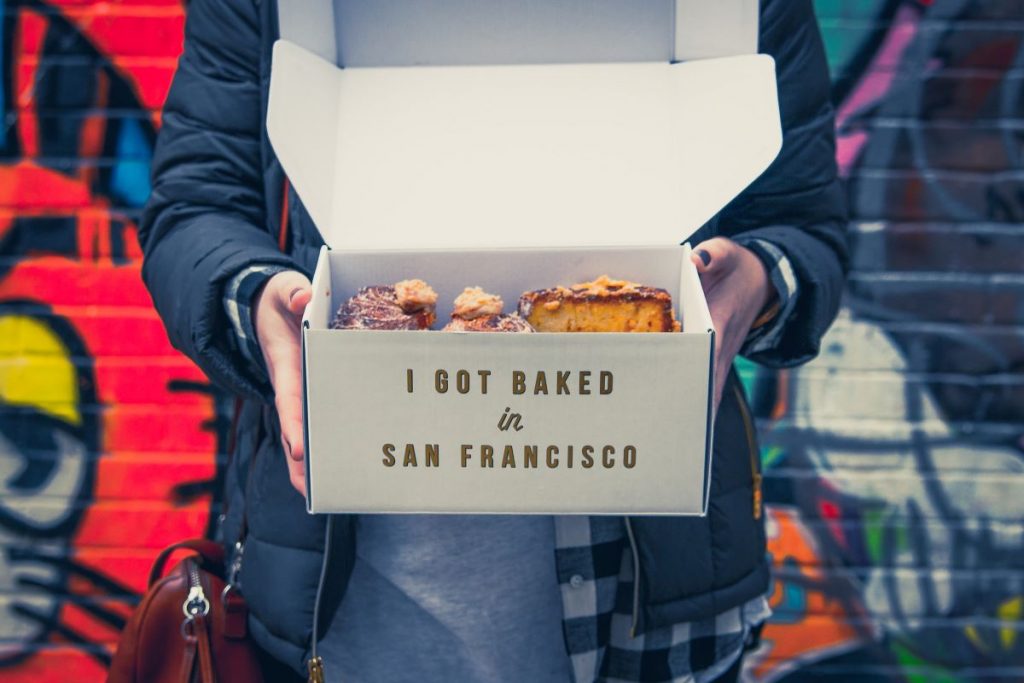
FAQ´s – San Francisco streetcars
Are the streetcars accessible for everyone?
Yes. Most of San Francisco’s historic streetcars are wheelchair accessible, and designated spaces are available for passengers with mobility devices. However, a few of the older models may have limited accessibility, so it’s best to wait for the next streetcar if needed—Muni operators can advise which cars are fully accessible.
What is the Muni transport card/pass?
San Francisco’s Muni (Municipal Railway) is the city’s main public transportation system, connecting every corner of the city through buses, light rail, trolleys, and the iconic historic streetcars. Muni offers an affordable and convenient way to explore—from the waterfront to the hilltops. With a single ticket or Clipper Card, travelers can hop between modern trains, vintage streetcars, and electric buses, making it easy to experience the city’s famous landmarks without the hassle of driving or parking.
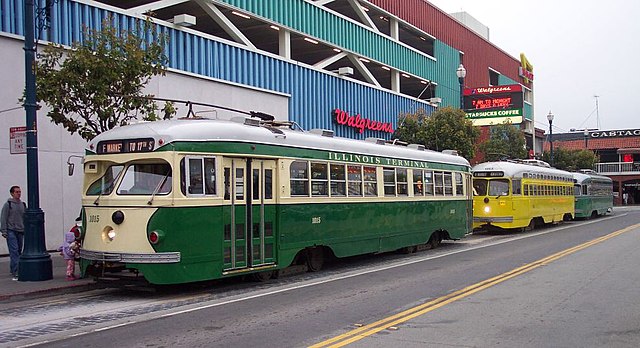
Can I use the same ticket for all Muni transport?
Absolutely. Your Muni streetcar ticket or Clipper Card works across the entire Muni network, including buses, light rail, and the Metro system. It’s a great way to mix vintage travel with modern convenience as you explore different parts of the city.
What are the prices for travel?
If you pay with cash on the streetcar, the adult fare is $3.00. If you pay ahead using MuniMobile (app) or Clipper Card, it’s slightly cheaper: $2.85 for adults. For youth (ages 5-18), seniors (65+) and people with disabilities, the fares are lower: Cash fare: $1.50, MuniMobile / Clipper fare: $1.40. Children under 5 ride free.
If you plan to hop on and hop off during your stay it is probably easier to get one of the passes & Unlimited Ride Options: Day Pass (no cable cars included): $5.70 via MuniMobile (or farebox) for unlimited Muni rides, including historic streetcars, until 11:59 pm that day.
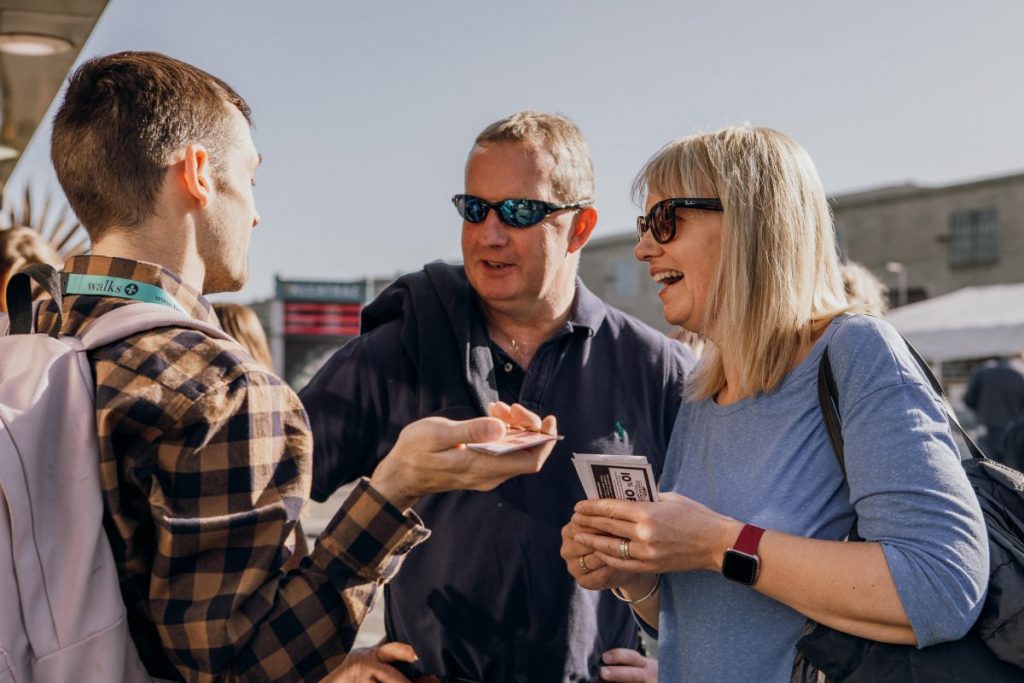
Discover the world one step at a time with Take Walks. Whether you’re wandering the cobblestone streets of Rome, exploring hidden corners of Paris, or uncovering local secrets in New York, Take Walks offers expert-led tours that bring every city to life. With passionate guides, small groups, and exclusive access to iconic landmarks, you’ll experience each destination like a true insider. Wherever your travels take you—walk with us and see the world differently.
